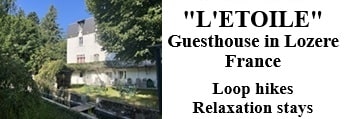Jasper National Park |

 Jasper: a kingdom where nature tells the story of the world
Jasper: a kingdom where nature tells the story of the world
Founded in 1907, Jasper National Park is an ode to the raw and wild splendor of the Canadian Rockies. Spanning over 11,000 square kilometers, it is located about 370 kilometers west of Edmonton, Alberta. This park is not only Canada's fifth national park: it is the vibrant heart of a group of seven Canadian Rocky Mountain parks listed as a UNESCO World Heritage Site, sharing this honor with Banff, Yoho, Kootenay, and the provincial parks of Mount Robson, Assiniboine, and Hamber. Together, they form a spectacular mosaic where mountains, glaciers, rivers, and valleys coexist in majestic harmony. Jasper is a sanctuary for dreamers, adventurers, and nature lovers. It is a living canvas painted by the passage of time: from the sparkling glaciers of the Columbia Icefield to the canyons sculpted over centuries, to the alpine meadows adorned with wildflowers that sway in the wind. This park is a celebration of Earth, in all its timeless beauty and strength.
 A story carved in stone and time
A story carved in stone and time
Before it became a realm of towering peaks, turquoise lakes, and dense forests, Jasper was a humble, quiet plain. One billion years ago, this region was a marine basin, where waters hosted deposits of silt, clay, and sand. These sediments, accumulated over millennia, formed deep strata, compressed by the weight of time. Then, about 75 million years ago, the Earth began to boil. Unimaginable tectonic forces began to uplift and fold these sediments into grand mountains. The Rockies were born. But they were not yet the jagged giants we know today. Erosion – sculpting, polishing, tearing – took care of giving them their final shape, transforming each valley, each summit, and each glacier into works of geological art.
A symphony of ecosystems
Jasper National Park is an invitation to travel through distinct natural worlds, each vibrating with unique life. These three major ecosystems – mountainous, subalpine, and alpine – form a complex and balanced symphony. In the valleys, the forests breathe and sing. Here, lodgepole pines mingle with white spruces, while trembling aspens quiver in the light breeze. It is a place where life is dense, animated by the murmurs of streams and the soft footsteps of animals. On the steep slopes, the climate becomes more demanding, and the subalpine forests cling to the mountain sides like vigilant guardians. Subalpine firs and Engelmann spruces rise toward the sky, defying the cold and the snow. At the top, the alpine zone extends, wild and bare. Here, trees give way to a carpet of tenacious flowers. Saxifrage, Rocky Mountain penstemon, and moss campion burst into colors, transforming the meadows into an ephemeral kaleidoscope.
 The kingdom of giants and predators
The kingdom of giants and predators
In this wild land, wildlife thrives freely. Jasper is a refuge where some of North America's most iconic animals coexist. The plains and forests are home to giants such as elk, moose, mule deer, and woodland caribou, a threatened but still protected resident of these vast spaces. On the rocky slopes, bighorn sheep and mountain goats defy gravity, their silhouettes outlined against the snowy ridges. Predators also reign in this wilderness. Grizzly bears, majestic and imposing, sometimes cross paths with black bears, more elusive but just as fascinating. Wolves roam the valleys, while lynxes and cougars lurk in the shadows. Every howl of a coyote and every track in the snow tells a story. For bird lovers, the park is a paradise. With over 305 bird species, Jasper's sky is a symphony of flapping wings. From the mischievous Canada jay to the golden eagle soaring above the valleys, each bird adds a touch to this living fresco.
 A human heritage rooted in millennia
A human heritage rooted in millennia
Long before the first European settlers laid eyes on this land, Jasper National Park was a sacred territory for the First Nations. The Athabascans, Sekani, Dane-zaa, Tsuut'ina, and Secwepemc have roamed these valleys and mountains for millennia, living in harmony with nature, hunting, fishing, and telling stories that still resonate today. Archaeological remains, dating back 10,000 years, testify to their ancient presence. However, the arrival of settlers and the creation of the park marked a tragic turning point. The often brutal policies of Canadian national parks led to the expulsion of Indigenous peoples and Metis families who had lived here for generations. New laws banning hunting and trapping deprived them of their livelihoods, and in 1909, eviction notices were issued, forcibly erasing their human imprint to make way for a tourist destination.
A future shaped by history and preservation
The modern history of Jasper is intimately linked to the railways that provided access to its wonders. Although Yellowhead Pass was bypassed by the Canadian Pacific in favor of Kicking Horse Pass, other companies such as the Grand Trunk Pacific Railway and the Canadian Northern Railway eventually connected the region, laying the foundations for its transformation into a national park in 1930. Today, Jasper is much more than a park. It is a dark-sky preserve, one of the largest dark sky sanctuaries in the world, where constellations lost to urban light pollution shine with a renewed intensity. It is also a place where visitors can hike among the peaks, explore dizzying canyons, or paddle on the ethereal waters of Maligne Lake.






